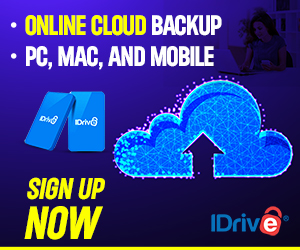Selecting the right fleet monitoring system is crucial for optimizing your business operations and ensuring the efficiency of your fleet management. With a plethora of options available, it can be overwhelming to decide which system best suits your business needs. Here are essential factors to consider when choosing a fleet monitoring system. By the end of this read, you’ll be equipped with the knowledge to make an informed decision that aligns perfectly with your business objectives.

Real-Time Tracking Features
Real-time tracking is the backbone of any effective fleet monitoring system. Ensure the system provides accurate and up-to-the-minute information on your vehicle’s location, speed, and status. For tracking, fleet camera systems offer an additional layer of security and accountability, providing visual insights that go beyond traditional telematics data. This feature is not only crucial for enhancing efficiency but also for immediate decision-making, allowing you to respond promptly to any unforeseen circumstances.
Integration Capabilities
Look for a fleet monitoring system that seamlessly integrates with your existing software and systems. The last thing you want is a disjointed set of tools that hinder rather than enhance your operations. Choose a system that can integrate with your fleet management software, GPS navigation, and other relevant tools, ensuring a smooth and unified experience.
Compatibility with Existing Systems
Ensure that the fleet monitoring system seamlessly integrates with your current fleet management software, GPS navigation tools, and any other relevant software your business utilizes. Compatibility eliminates the need for redundant data entry and fosters a cohesive operational environment.
API Support
Check if the fleet monitoring system provides robust Application Programming Interface (API) support. This allows for flexible and efficient communication between different software applications. A system with well-documented APIs facilitates smoother data exchange, enabling you to connect and share information with other business systems effortlessly.
Third-Party Integration
Look for a fleet monitoring solution that offers the option to integrate with third-party applications. This can include accounting software, maintenance management tools, or other specialized software that complements fleet management. A system with diverse integration possibilities allows you to create a comprehensive and tailored solution for your business needs.
Scalable Integration
Consider the future growth of your business. A fleet monitoring system that supports scalable integration ensures that it can adapt to new technologies and software as your business expands. This flexibility is crucial for maintaining efficiency and effectiveness in the long run, preventing the need for a complete system overhaul as your business evolves.
Customization and Scalability
Your business is unique, and so are its requirements. Opt for a fleet monitoring system that offers customization options to tailor the solution to your specific needs. Additionally, consider scalability – the system should be able to grow with your business. This ensures that as your fleet expands, your monitoring system can effortlessly accommodate the increased workload.
Reporting and Analytics
Data-driven decision-making is essential for optimizing fleet management. Look for a system that provides comprehensive reporting and analytics features. This includes detailed insights into fuel consumption, driver behavior, maintenance needs, and other key performance indicators. The ability to generate customizable reports empowers you to identify trends, spot inefficiencies, and make strategic decisions to improve overall performance.
Geofencing and Alerts
Geofencing allows you to define specific geographical boundaries for your vehicles. When a vehicle enters or exits these predefined areas, the system triggers alerts. This feature is invaluable for monitoring unauthorized use, ensuring route compliance, and enhancing security. Choose a fleet monitoring system that offers robust geofencing capabilities along with customizable alerts to keep you informed in real-time.
User-Friendly Interface
A powerful fleet monitoring system is only effective if it’s user-friendly. Consider the interface’s intuitiveness and accessibility for both experienced and new users. A system that is easy to navigate reduces the learning curve for your team, ensuring swift adoption and efficient utilization of the monitoring tools.
Cost and Return on Investment
While evaluating fleet monitoring systems, it’s crucial to consider the cost and potential return on investment (ROI). Look beyond the initial price and assess the long-term benefits the system can bring to your business. Consider factors such as fuel savings, reduced maintenance costs, improved driver behavior leading to lower insurance premiums, and overall operational efficiency. A system that may have a higher upfront cost but delivers substantial long-term savings and improvements in productivity can prove to be a wise investment for your business.

Selecting the right fleet monitoring system is a strategic decision that directly impacts the efficiency and success of your business. By prioritizing integration capabilities, real-time tracking, customization, reporting and analytics, geofencing, and a user-friendly interface, you ensure that the chosen system aligns perfectly with your unique business needs.





